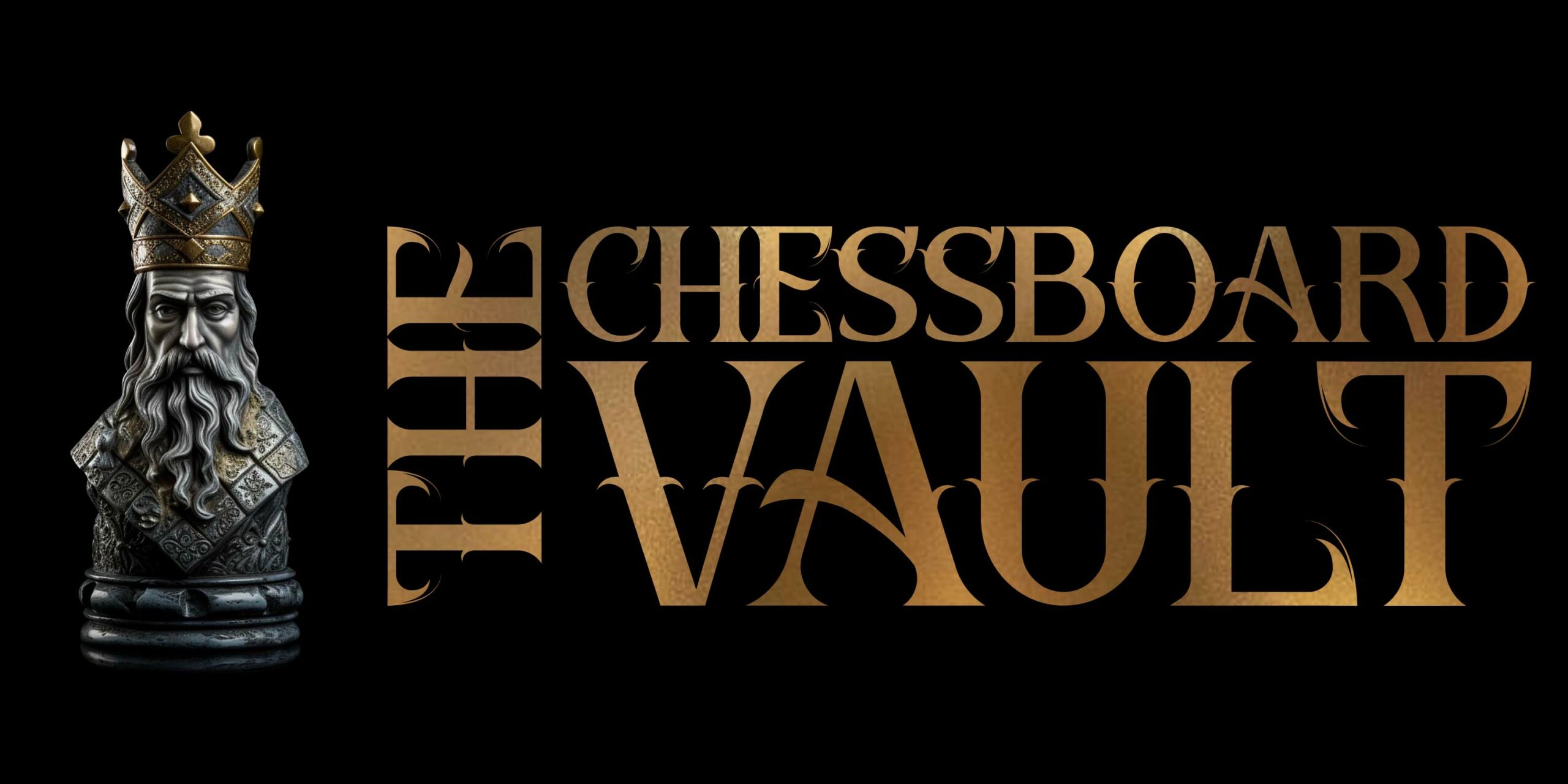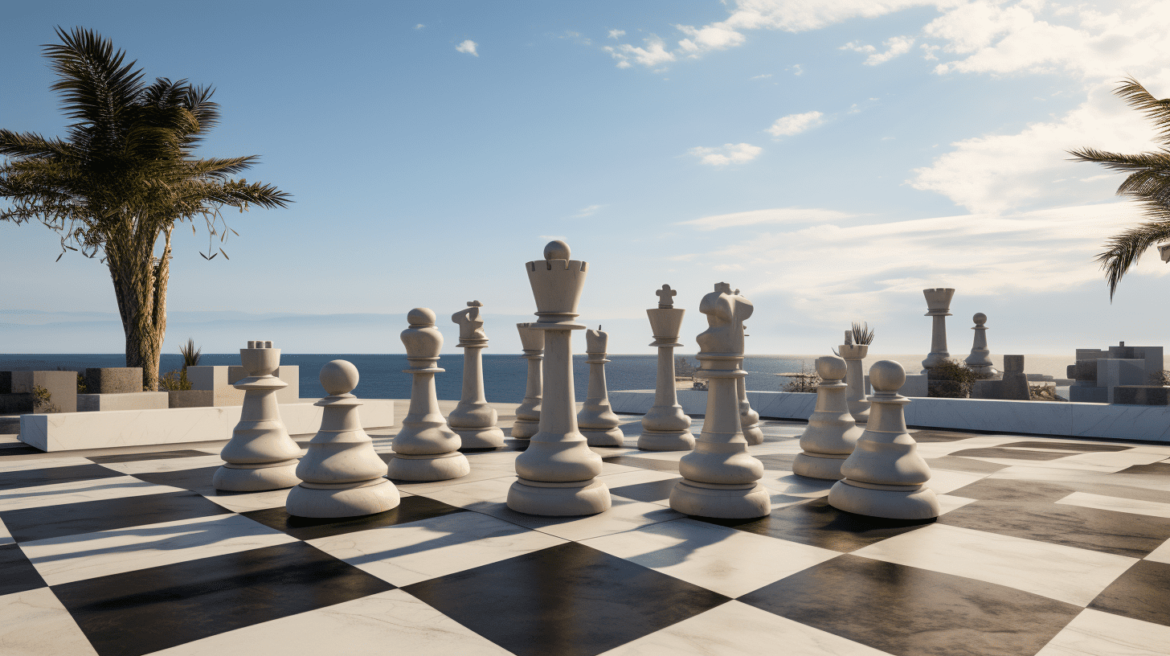So, how big is a chessboard? The standard chessboard consists of 64 squares, arranged in an 8×8 grid. Each square, regardless of its color, has a precise dimension. For official tournament play, the World Chess Federation (FIDE) sets clear guidelines. They dictate that each square should measure between 5 cm (about 2 inches) to 6 cm (roughly 2.36 inches) on each side. Therefore, when you account for all 8 squares in a row or column, the total size of a standard tournament chessboard will range from 40 cm x 40 cm (around 15.75 inches x 15.75 inches) to 48 cm x 48 cm (approximately 18.9 inches x 18.9 inches).
However, not every chessboard used at home or in casual settings adheres to these official dimensions. Many sets, particularly decorative or travel-sized ones, may be larger or smaller. When buying a board or creating your own, it’s essential to ensure that the pieces fit comfortably on the squares. After all, nobody wants to play a game where the knights and bishops are constantly toppling over!
Official Tournament Size
Each chessboard consists of 64 squares, set in an 8×8 grid. According to FIDE’s regulations, the size of each square should be between 5 cm to 6 cm. That translates to approximately 2 inches to 2.36 inches. The emphasis is on ensuring that the squares are well-defined and sufficiently large to accommodate the chess pieces without them appearing crowded or unstable.
Overall Board Size: Given the individual square sizes, this means a standard tournament chessboard will measure between:
- Minimum: 40 cm x 40 cm (about 15.75 inches x 15.75 inches)
- Maximum: 48 cm x 48 cm (approximately 18.9 inches x 18.9 inches)
Average Size: While the range allows for slight variation, most official tournament boards tend toward the larger end of the spectrum. This provides ample space for each piece and allows for better visibility during play, especially in high-stakes matches. Thus, a commonly encountered dimension in major tournaments is closer to the maximum, around 47 cm x 47 cm or roughly 18.5 inches x 18.5 inches.
Purpose of Standardization: Consistency in board size, especially at the top levels of play, ensures that no player has an advantage or disadvantage due to unfamiliarity with the board dimensions. It also guarantees that tournaments worldwide, regardless of where they’re held, maintain a standard look and feel.
Club and School Chessboard Sizes
For clubs and schools, the ideal chessboard square size is slightly more flexible than FIDE’s rigorous standards. The size of each square typically ranges from 4.5 cm to 6 cm. This equates to about 1.77 inches to 2.36 inches. The variance allows for a balance between comfort and affordability, ensuring that pieces are adequately spaced while also keeping costs manageable for institutions or clubs that may need to purchase in bulk.
Overall Board Size: Given the dimensions of individual squares:
- Minimum: 36 cm x 36 cm (around 14.17 inches x 14.17 inches)
- Maximum: 48 cm x 48 cm (approximately 18.9 inches x 18.9 inches)
Common Sizes: In many school and club settings, boards often lean toward the median of the range. A frequently encountered dimension is approximately 42 cm x 42 cm, or roughly 16.5 inches x 16.5 inches. This size offers a good compromise: large enough for comfortable play and small enough for easy storage and bulk purchasing.
Purpose of Varied Sizes: Chess clubs and schools face different challenges than professional tournaments. They need boards that are durable, cost-effective, and suitable for a variety of players, from young children to adults. The flexibility in board size allows institutions to select what works best for their specific needs, whether that’s accommodating younger players or ensuring durability against frequent use.
Decorative Chessboard Sizes
Given their decorative nature, there’s no fixed standard for the square sizes of these boards. However, many artisanal creators tend to go for larger squares to showcase intricate designs and craftsmanship. Sizes can range anywhere from 5 cm to 10 cm per square, translating to about 2 inches to nearly 4 inches.
Overall Board Size: Given the broad spectrum of square dimensions:
- Minimum: 40 cm x 40 cm (around 15.75 inches x 15.75 inches)
- Maximum: 80 cm x 80 cm (approximately 31.5 inches x 31.5 inches)
However, it’s not uncommon to find even more oversized boards, especially those meant as centerpiece installations in grand spaces.
Common Sizes: Most decorative chessboards fall within the range of 50 cm x 50 cm to 70 cm x 70 cm, which is approximately 19.7 inches x 19.7 inches to 27.6 inches x 27.6 inches. These sizes offer ample space for intricate designs, inlays, and luxurious materials without overwhelming a standard room setting.
Purpose of Varied Sizes: Decorative chessboards are as much about art as they are about the game. They might feature hand-carved pieces, ornate inlays, precious metals, or rare woods. The size must complement the level of detail and the intended display setting. Whether it’s a focal point in a study, a statement piece in a living room, or a playable art piece in a game room, the board’s size plays a crucial role in its aesthetic impact.
Travel and Compact Chessboard Sizes
Given their need for portability, travel chessboards generally feature smaller squares. The sizes can range from as tiny as 2 cm to around 4 cm, which translates to approximately 0.79 inches to 1.57 inches.
Overall Board Size: Based on the dimensions of individual squares:
- Minimum: 16 cm x 16 cm (around 6.3 inches x 6.3 inches)
- Maximum: 32 cm x 32 cm (approximately 12.6 inches x 12.6 inches)
Common Sizes: Most travel chessboards gravitate towards the smaller end of the spectrum for genuine portability. A frequently encountered size is approximately 25 cm x 25 cm, or roughly 9.84 inches x 9.84 inches. This size offers a balance between playability and compactness, suitable for most travel scenarios.
Special Features for Portability: Travel and compact chessboards often come with features that maximize their convenience:
- Magnetic Pieces and Boards: This ensures that the pieces remain in place even if the board is jostled during play.
- Roll-up Boards: Made of flexible material like vinyl or soft leather, these boards can be rolled into a tube shape for easy storage and transportation.
- Foldable Boards with Storage: Many travel boards fold in half, with dedicated compartments inside to store the chess pieces.
Purpose of Compact Sizes: Travel chessboards cater to enthusiasts who don’t want to be bound by location. Whether you’re on a plane, waiting at an airport, camping in the great outdoors, or just enjoying a sunny day in the park, these compact boards ensure the game is always within arm’s reach.
Giant Outdoor Chessboards
Given their larger-than-life nature, the squares on these boards are correspondingly vast. Common sizes for individual squares range from 30 cm to 60 cm, or approximately 11.8 inches to 23.6 inches. Some extravagant setups can even exceed these dimensions.
Overall Board Size: Factoring in the dimensions of individual squares:
- Minimum: 240 cm x 240 cm (around 94.5 inches x 94.5 inches or 7.87 feet x 7.87 feet)
- Maximum: 480 cm x 480 cm (approximately 189 inches x 189 inches or 15.75 feet x 15.75 feet)
Common Sizes: Many outdoor chess installations, especially those in public parks or recreational areas, tend to be around 360 cm x 360 cm, translating to roughly 141.7 inches x 141.7 inches or about 11.8 feet x 11.8 feet. This size offers a delightful balance between the dramatic visual impact and practical playability.
Materials and Durability: Given their exposure to the elements, outdoor chessboards often feature:
- Weather-resistant materials: These can range from robust plastics to treated woods or even sturdy stone in some luxury setups.
- Durable, weighted pieces: To prevent them from toppling over in windy conditions or during play, pieces are often made heavy or have weighted bases.
Purpose of Giant Sizes: Beyond just the thrill of playing chess on a grand scale, these oversized boards serve multiple functions:
- Interactive Play: They encourage physical interaction, making the game a blend of mental and physical activity.
- Spectator Appeal: They become visual landmarks, drawing crowds and turning casual onlookers into eager participants.
- Educational Tool: Schools or institutions might use them for interactive lessons, teaching chess principles on a scale where everyone can see and engage.

